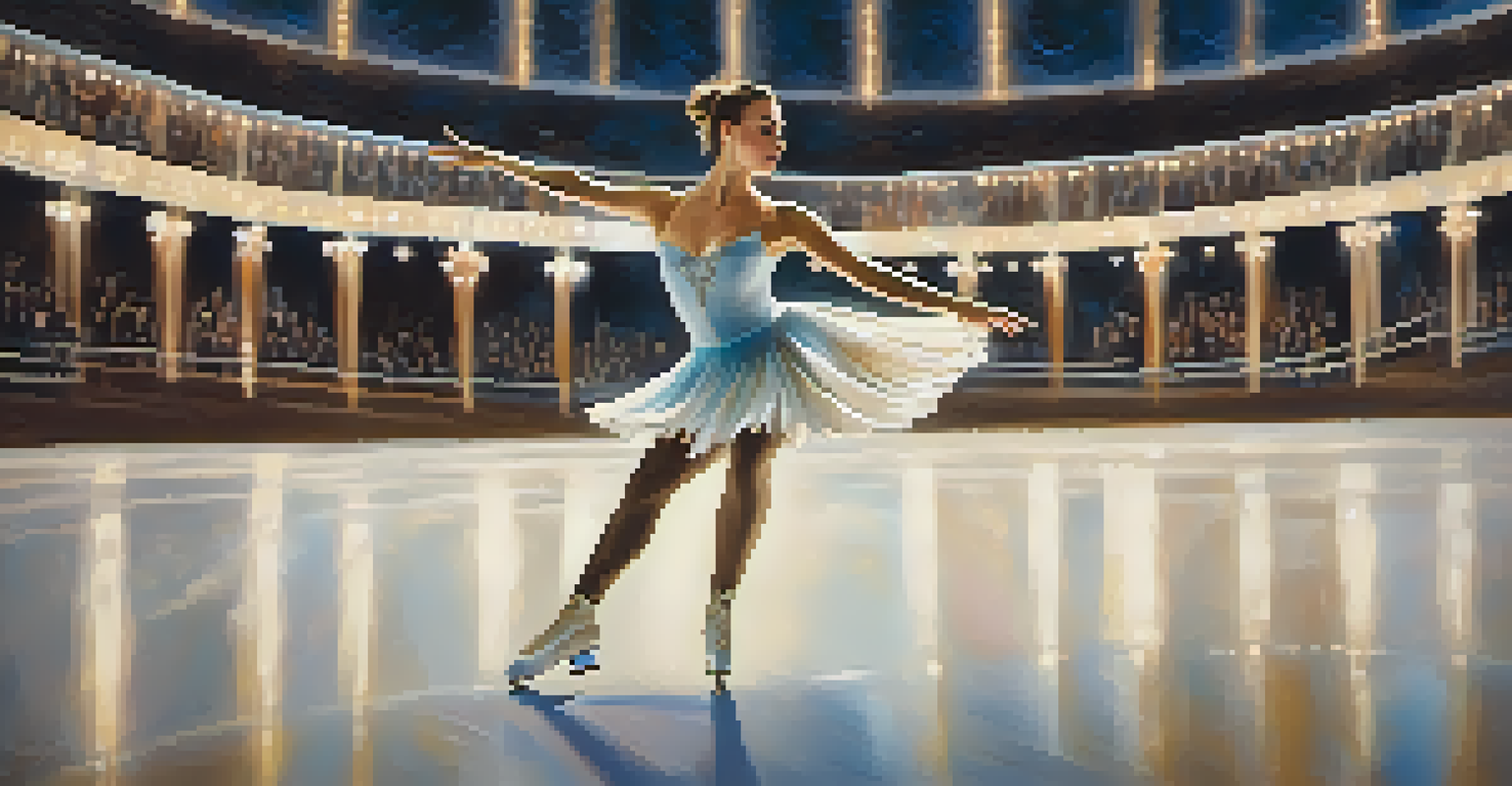The History of Ice Skating: From Ancient Times to Today

The Origins of Ice Skating in Ancient Times
Ice skating has roots that trace back over 5,000 years, with evidence found in Scandinavia. Ancient people used animal bones as blades, creating a means of travel over icy waters.
Ice skating is a dance on ice. It is a combination of art and sport, a celebration of movement and balance.
These early skaters were not just looking for a fun pastime; they were often hunting or trading, using the ice to their advantage. Imagine gliding effortlessly across frozen lakes while pursuing a meal!
This innovative method of movement laid the groundwork for what would evolve into a beloved sport, showcasing human creativity and adaptability in harsh climates.
The Development of Skating in Europe
During the Middle Ages, ice skating began to gain popularity in Europe, especially in countries like the Netherlands and England. Skating became a recreational activity enjoyed by the nobility and commoners alike.

With the introduction of metal blades in the 13th century, skating became more accessible and efficient. Imagine the thrill of gliding across ice with a smooth, metal blade instead of a bone!
Ice Skating's Ancient Origins
Ice skating dates back over 5,000 years, starting with early humans using animal bones to glide across frozen waters.
This period marked a significant transition from a means of transportation to a sport, laying the foundation for future competitions and events that would captivate audiences.
The Birth of Figure Skating
By the 18th century, figure skating emerged as a distinct sport, with its own set of techniques and styles. The first recorded figure skating club was established in 1742 in Edinburgh, Scotland.
The ice is a wonderful place to express yourself and your creativity, whether through figure skating or ice hockey.
As more people took to the ice, they began to incorporate artistic elements, transforming skating into a graceful performance art. Picture skaters twirling and leaping gracefully, captivating spectators with their elegance!
This growth in popularity paved the way for the first figure skating competitions, setting the stage for an enduring love affair with this dazzling sport.
Ice Skating in the 19th Century
The 19th century saw ice skating continue to evolve, with the establishment of formal competitions and the introduction of organized clubs. This era marked the beginning of skating as a recognized sport.
Innovations like the introduction of the steel blade allowed skaters to reach new speeds and perform intricate maneuvers. Imagine the excitement of skating faster and with more control than ever before!
The Evolution of Competitive Skating
Ice skating transformed from a means of transportation to a recognized sport in Europe, especially with the introduction of metal blades.
This newfound focus on competition attracted a wider audience, solidifying ice skating’s status as a popular winter sport across Europe and beyond.
The Rise of Ice Hockey
In the late 19th century, a new ice sport emerged: ice hockey. Originating in Canada, it blended elements of field hockey and rugby, quickly gaining traction among players and fans.
The fast-paced, team-oriented nature of hockey brought a new dynamic to ice sports. Picture the energy of players racing across the ice, sticks clashing as they vie for control of the puck!
As hockey leagues and championships developed, the sport's popularity soared, establishing a deep cultural connection with winter sports enthusiasts worldwide.
The Modern Era of Ice Skating
Today, ice skating encompasses a variety of disciplines, including figure skating, ice dancing, and speed skating. Each discipline showcases unique skills and artistry, appealing to a wide range of audiences.
Major events like the Winter Olympics and World Championships have further propelled the popularity of ice skating. Imagine the thrill of watching athletes perform breathtaking routines on a global stage!
Cultural Impact of Ice Skating
Ice skating symbolizes grace and community, bringing people together during winter festivities and inspiring future generations.
With advancements in technology and training, skaters continue to push the boundaries of what’s possible on ice, ensuring that this beloved sport remains relevant and exciting.
Ice Skating's Cultural Significance
Ice skating holds a special place in various cultures around the world, often symbolizing grace, elegance, and community. From local ice rinks to grand performances, skating brings people together.
In many countries, winter festivals feature ice skating as a central activity, fostering camaraderie and joy. Imagine families and friends sharing laughter and creating memories on a chilly winter's day!

This cultural significance continues to inspire the next generation of skaters, ensuring that the love for ice skating endures through time.